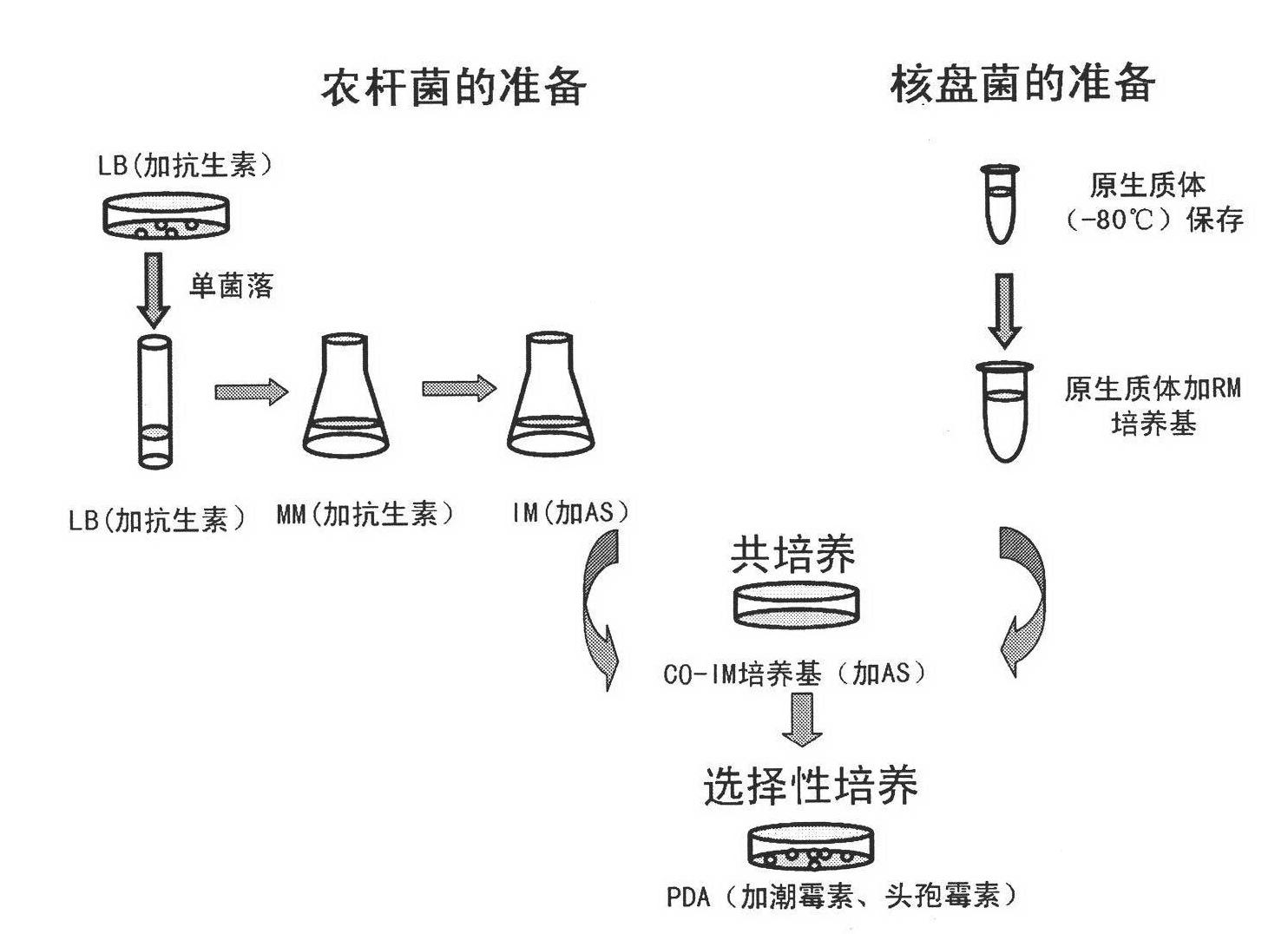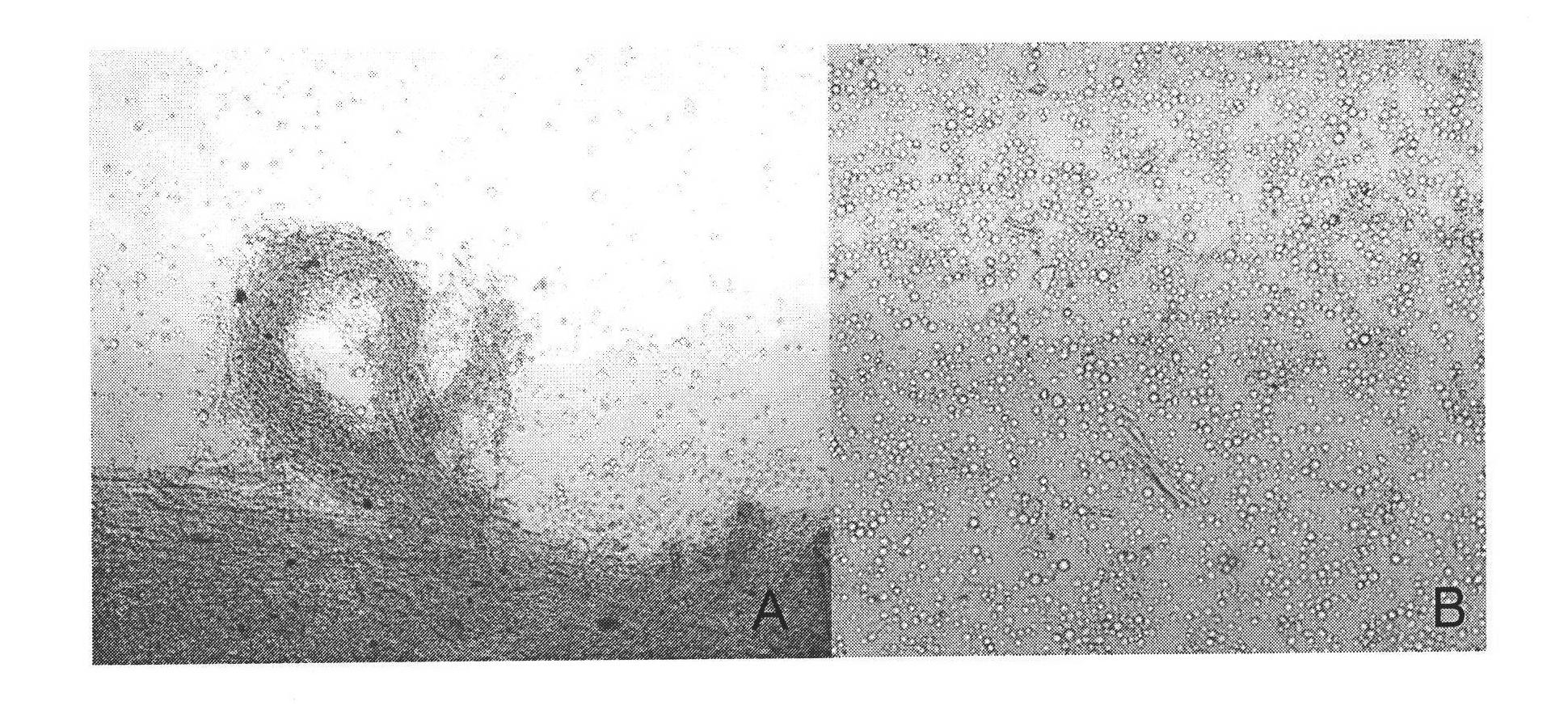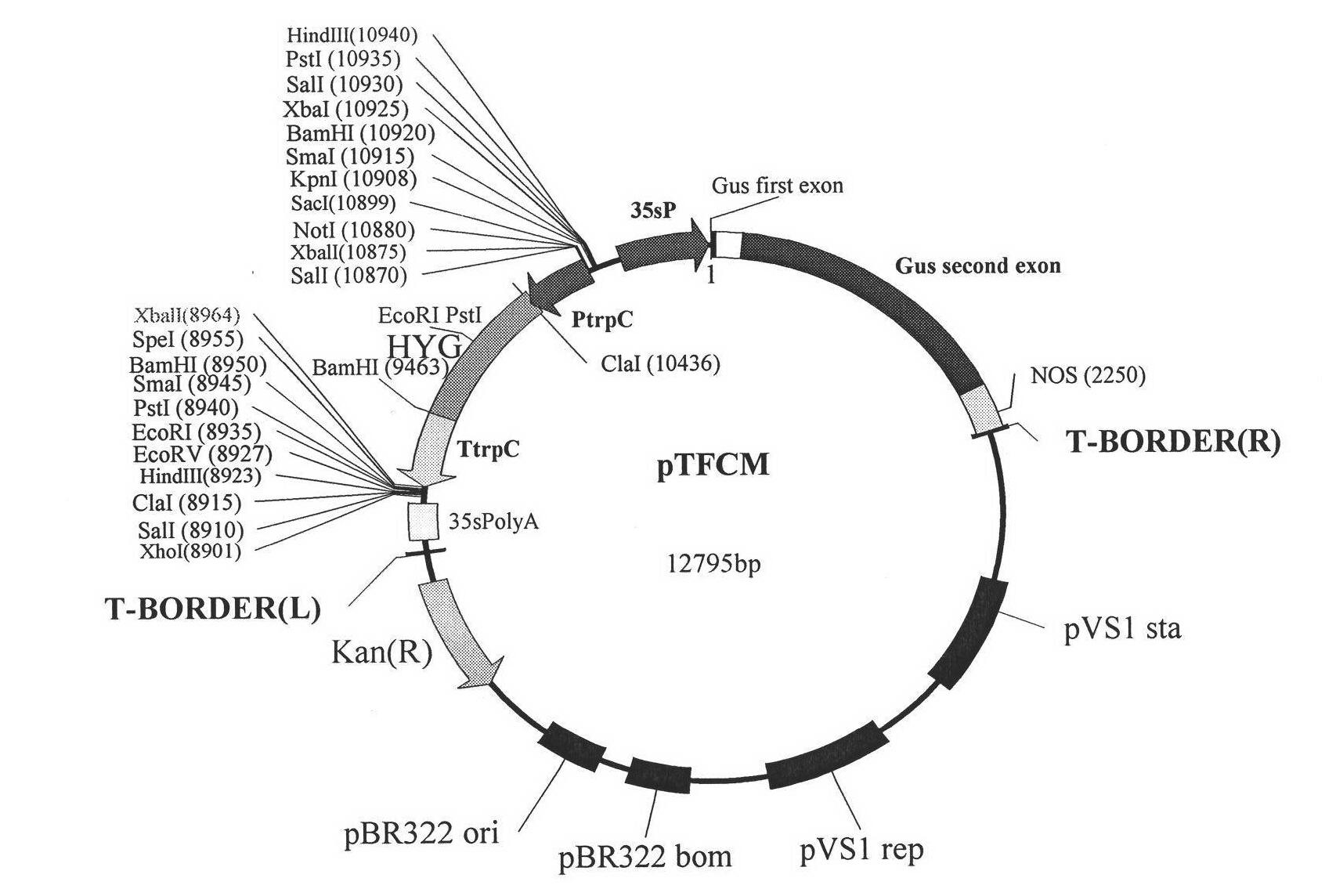Method for genetic transformation of agrobacterium tumefaciens mediated sclerotinia sclerotiorum
A genetic transformation method, the technology of Agrobacterium tumefaciens, applied in the direction of microorganism-based methods, biochemical equipment and methods, and the use of vectors to introduce foreign genetic materials, etc., can solve problems such as the difficulty of genetic transformation of Sclerotinia sclerotiorum, and achieve simple preparation technology , easy operation and high conversion efficiency
- Summary
- Abstract
- Description
- Claims
- Application Information
AI Technical Summary
Problems solved by technology
Method used
Image
Examples
Embodiment 1
[0070] Embodiment 1: the construction of the T-DNA random insertion mutant library of Sclerotinia bacterial strain Sunf-M
[0071] 1. Preparation of protoplasts from the transformed recipient S. sclerotiorum strain Sunf-M
[0072] Inoculate the S. sclerotiorum strain Sunf-M (Xie Jun et al., Journal of General Virology. 2006, 87, 241-249) on the PDA medium, culture it at 20°C, and continuously pick the vigorously growing S. sclerotiorum Sunf -M colony edge hyphae blocks were transferred to the 2nd generation activated strain.
[0073] Take 3 mycelial pieces at the edge of the activated S. sclerotiorum strain Sunf-M colony and inoculate them on a PDA plate covered with cellophane. After 48 hours, the mycelium was collected, ground with a sterilized mortar, added 3ml of PDB, and mixed with a pipette equipped with a sterilized tip. Aspirate mycelial fragments and inoculate them into 100ml of PDB medium, shake at 150r / min at 20°C for 24h, then centrifuge at 6000r / min for 10min, a...
Embodiment 2
[0111] Embodiment 2: Feasibility analysis embodiment
[0112] Although S. sclerotiorum protoplasts are easier to transform than hyphae, and easier to obtain than ascospores, the preparation of protoplasts for S. sclerotiorum transformation has been reported to prepare a variety of different solutions, and it needs to be washed several times with different solutions. Mycelia or protoplasts (Rollins, 2003; Yang Lei et al., 2006), so the complicated preparation of S. sclerotiorum protoplasts has become the biggest disadvantage of using protoplasts as transformation recipients. The invention optimizes conditions such as protoplast preparation and protoplast preservation. The preparation method of S. sclerotiorum protoplast provided in the invention only needs to prepare MgSO 4 and STC solution, and only need to use MgSO 4 The mycelium was washed once with liquid, and the obtained protoplasts did not need to be washed and other treatments, and the protoplasts could be preserved i...
PUM
 Login to View More
Login to View More Abstract
Description
Claims
Application Information
 Login to View More
Login to View More - R&D
- Intellectual Property
- Life Sciences
- Materials
- Tech Scout
- Unparalleled Data Quality
- Higher Quality Content
- 60% Fewer Hallucinations
Browse by: Latest US Patents, China's latest patents, Technical Efficacy Thesaurus, Application Domain, Technology Topic, Popular Technical Reports.
© 2025 PatSnap. All rights reserved.Legal|Privacy policy|Modern Slavery Act Transparency Statement|Sitemap|About US| Contact US: help@patsnap.com



